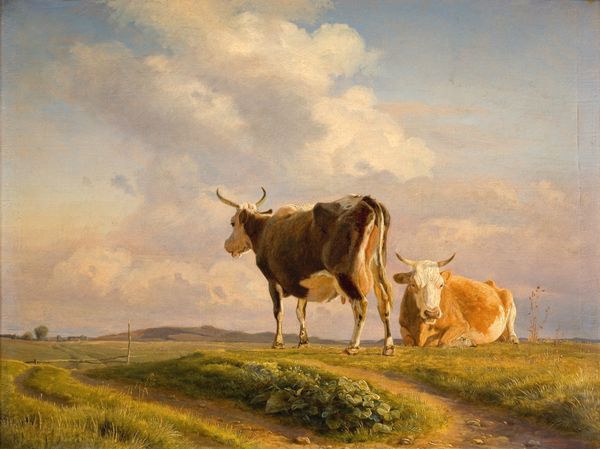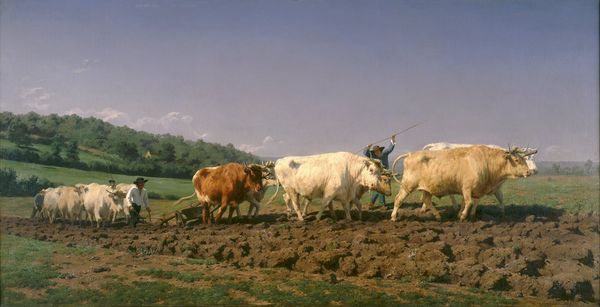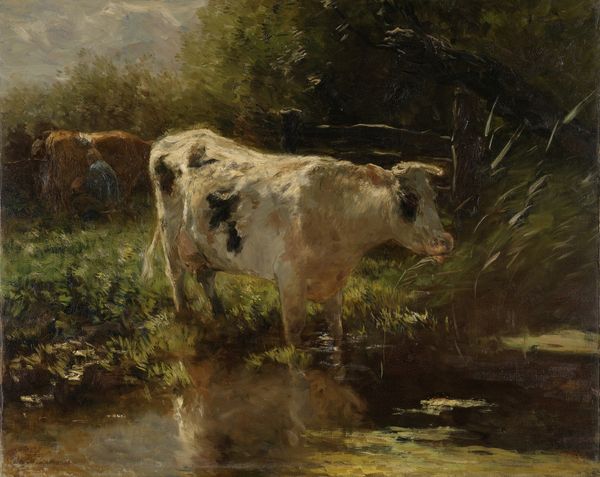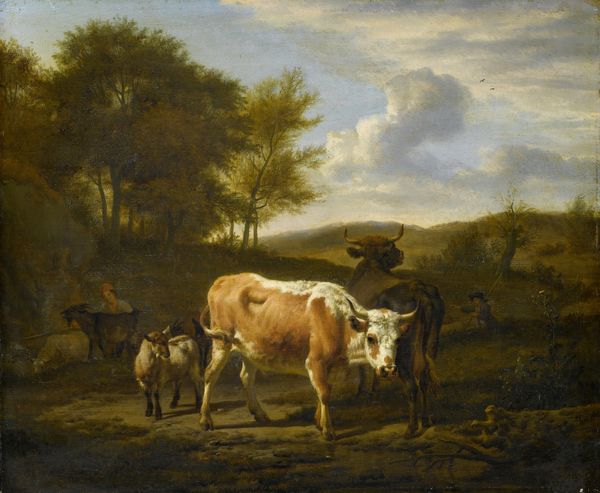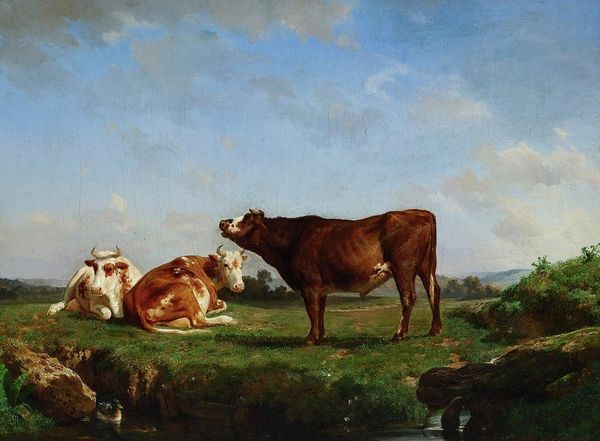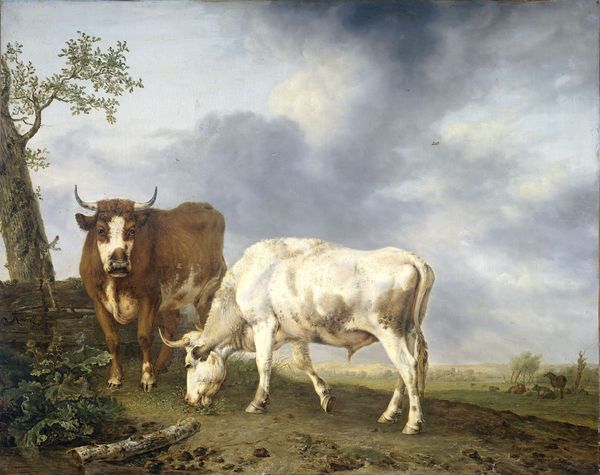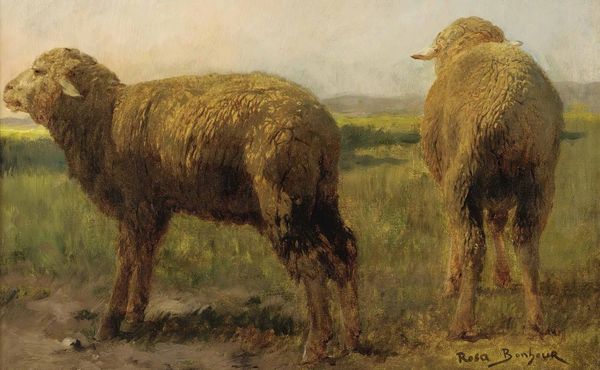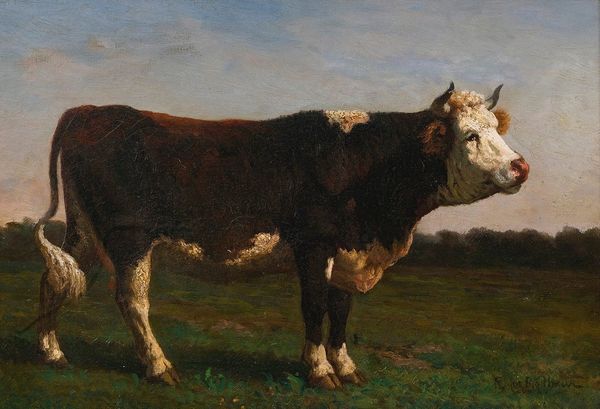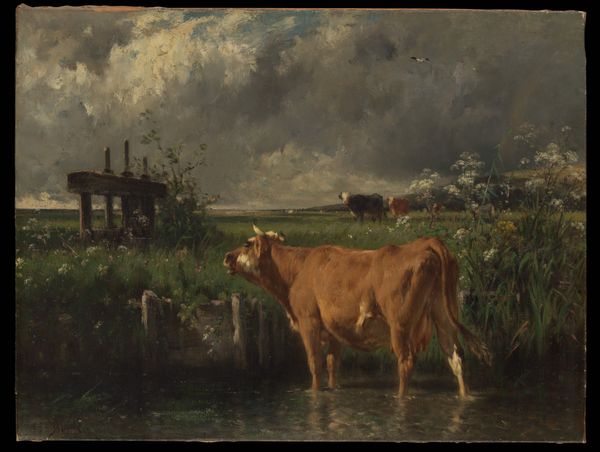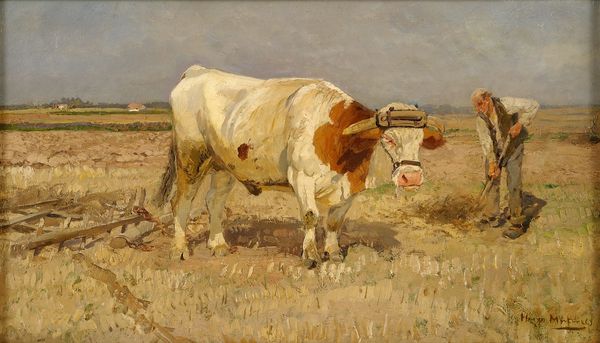
oil-paint
#
baroque
#
oil-paint
#
landscape
#
oil painting
#
genre-painting
#
realism
Copyright: Public Domain: Artvee
Editor: Here we have "Oxen Pulling A Cart," an oil painting attributed to Rosa Bonheur. I'm struck by how grounded and almost somber it feels. What stands out to you about this piece? Curator: I see a powerful representation of labor and the often-unseen forces that shaped agricultural societies. Consider the period – potentially mid-19th century. Bonheur, as a woman artist, challenges gendered expectations by portraying these powerful working animals, traditionally a masculine subject. How do you see the realism here, and what does it say about Bonheur's intention? Editor: I think the realism focuses on the mundane and real life as it is, which could also challenge romanticized views of rural life at the time. So it moves from idealized images towards an objective portrayal of working-class lives? Curator: Exactly. And who benefits from obscuring that reality? Bonheur brings forth a critical examination of power dynamics. By depicting the oxen in such detail, and seemingly without glorification, she redirects our attention to the backbone of the agrarian economy – the animals themselves, their quiet strength and unacknowledged toil. Consider also how the landscape serves as a backdrop to their work, situating them firmly within the demands of their environment. Editor: That's fascinating. So, it’s not just a pastoral scene but also a commentary on labor and gender roles. It gives a lot of power back to subjects generally overlooked by dominant artistic perspectives! Curator: Precisely. By viewing art through such a lens, we realize the ways in which even seemingly simple paintings like this one can engage with much wider sociopolitical struggles. I'm glad we've acknowledged this element of power at play. Editor: Thanks for sharing that. I definitely have a better understanding of Bonheur’s potential motivations here!
Comments
No comments
Be the first to comment and join the conversation on the ultimate creative platform.
